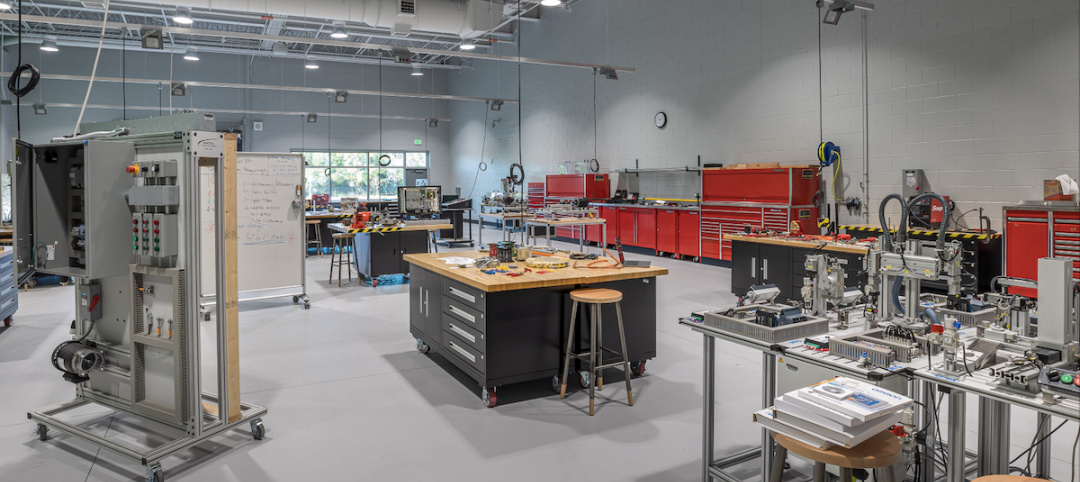In the AEC industry, securing media attention is no longer a niche endeavor but an essential component of a holistic marketing strategy. Strategic media coverage can and will boost your firm’s credibility, underscore impactful messaging about your brand, and ultimately set you apart from your competitors in a highly saturated market.
You attract what you put out into the market. If you’re looking for more of the work that you currently have, then publicize it. If you’re looking to expand into new sectors or geographic locations, you need a strategy that lies above the work you already have.
The first step is to define your vision and develop a way to get there.
What Does Success Mean For You?
Defining who you are as a firm is an important prerequisite of any marketing or publicity strategy. Outline your company’s core values and key differentiators: what sets your team and services apart? This will be invaluable as you develop the messaging underpinning any and all press outreach.
Next, consider where you want to be in the next five to ten years. Ask yourself and your team: what are our growth goals? How do we want to expand in terms of clients, geographic regions, or talent attraction? Identifying these goals will help define a successful PR strategy for you and ultimately create a roadmap for pitching. Everything you set out to pitch should tie back in some way to the goals you set out to achieve.
Identify Your Audience
When outlining a roadmap for achieving your goals, a good place to start is to think critically about your target audiences—potential clients, collaborators, and peers—and which avenues will give you the best chance at reaching them.
These days, there are so many different types of publications—traditional print media, online blogs, podcasts, and even social media channels—and each can bring value to your brand. Take the time to research a variety of publications and evaluate which ones align with the eyes you’d like to reach. Many publications have easily accessible media kits detailing their readership by volume, region, and profession.
Identify Your Hero Projects
While every project might be your darling, some will inevitably stand out among the crowd. Learn how to identify which projects showcase your team’s best work. Get started by organizing all projects in progress and creating an internal tracking system to monitor key milestones. Each milestone, from project win to groundbreaking to topping out, offers a potential touchpoint for media interest.
How you will ultimately communicate about the project is just as important. Take the time to dig deep and uncover the most critical features of your work. Ask yourself: what is the most important story to tell about this project? Why is it relevant now? Organize the themes and potential hooks that will be most compelling for journalists. Then, you can work to craft a narrative that will succinctly yet thoroughly communicate these elements.
It’s All About the Photos
We all have high-tech cameras in our pockets these days, but iPhone photography isn’t going to cut it in this industry. A good photographer is worth the investment. Do your research on specialist photographers in your area—which ones are regularly featured in your target publications?
Experienced AEC photographers will know how to capture your project in the best light. Prepare for the photoshoot to be a full-day (or more!) affair. Your photographer may want to capture certain elements at different hours of the day to account for shifting light levels. Some publications even publish guidelines for what they look for in photography—interior lighting, orientation, etc.
The Art of the Pitch
Editor’s inboxes are overflowing with stunning projects—make sure that the projects you put forward will stand out. This is where all of your preparation comes together. A compelling pitch is equal parts a timely hook and a killer set of photos.
Circle back to the project storylines you identified earlier and use them to draft a thoughtful and succinct pitch. These storylines should always tie back to the growth goals and KPIs that you initially set out to achieve. Offer a teaser of your strongest visuals, while providing a link or an attachment where the editor can review a larger set if they are interested.
Keeping a close eye on the media cycle is key for targeting the right publications and editors. Look at the stories your target has published recently—don’t send a healthcare project to a writer on an education beat. Another strategy is to review a publication’s media kit, identify the themes they will cover in the coming months, and target those editors accordingly.
Timeliness is also key. A project completed in the past few months is much more compelling than one completed in 2005.
Continue the Conversation With Thought Leadership
Project features aren’t the only avenue for media coverage. Elevating the thought leaders in your firm is a great way to further publicize impactful messages about your work, values, and ethos. After you’ve identified the messages that you want to tell about your company and your work, select the key thought leaders in your firm who can help disseminate these ideas. Consider investing in media training workshops for key spokespeople, to arm them with the best strategies for successful interviewing.
Again, make sure that your message is timely. Why do these ideas matter right now? Monitor the conversations happening in the industry and consider how your thought leaders can add a fresh perspective. Additionally, don’t be afraid to join in a conversation even if you don’t currently have the projects to back it up. Many firms are able to break into new markets and sectors by simply positioning themselves as critical thinkers in those areas.
Go Beyond the Placement
So you’ve secured the big placement and landed a project spread in a glossy print magazine, or a Q&A in the local business journal. A common mistake is thinking that your work ends there. How you utilize it moving forward is almost as important as landing the placement.
You can exponentially increase the engagement with your press placement by promoting it across company and personal platforms. Reshare the article through a LinkedIn post or an Instagram story. Create a page on your firm’s website dedicated to showcasing press. If you produce a regular firm newsletter, consider adding a section highlighting recent press placements. You never know what contact-of-a-contact you can reach through the power of a well-marketed press placement.
Publicity as a Strategy for Growth
Effective PR campaigns are built on a solid point of view, an understanding of current events and trends, and a creative approach to communicating timely narratives. Moreover, a robust public relations strategy is essential for business development. These avenues will maximize opportunities to showcase your work and thoughts leaders, reach target audiences with your key messaging, and position your brand for future growth.
Related Stories
K-12 Schools | Apr 1, 2022
Charleston County’s award-winning career and technical education high school
BD+C Executive Editor Rob Cassidy talks with the team behind the award-winning Cooper River Center for Advanced Studies, a Career|Technical Education high school in Charleston County, S.C.
Modular Building | Mar 31, 2022
Rick Murdock’s dream multifamily housing factory
Modular housing leader Rick Murdock had a vision: Why not use robotic systems to automate the production of affordable modular housing? Now that vision is a reality.
Contractors | Mar 28, 2022
Amid supply chain woes, building teams employ extreme procurement measures
Project teams are looking to eliminate much of the guesswork around product availability and price inflation by employing early bulk-purchasing measures for entire building projects.
Contractors | Mar 23, 2022
Hiring Construction Workers in a Frantic Post-Covid Job Market
McCarthy Building Companies' Director of Talent Acquisition, Ben Craigs, discusses the construction giant's recruitment and training strategies in a hyper-competitive market. Craigs sits down with BD+C Senior Editor John Caulfield.
Sponsored | BD+C University Course | Jan 30, 2022
Optimized steel deck design
This course provides an overview of structural steel deck design and the ways to improve building performance and to reduce total-project costs.
Urban Planning | Jan 25, 2022
Retooling innovation districts for medium-sized cities
This type of development isn’t just about innovation or lab space; and it’s not just universities or research institutions that are driving this change.
Sponsored | Resiliency | Jan 24, 2022
Norshield Products Fortify Critical NYC Infrastructure
New York City has two very large buildings dedicated to answering the 911 calls of its five boroughs. With more than 11 million emergency calls annually, it makes perfect sense. The second of these buildings, the Public Safety Answering Center II (PSAC II) is located on a nine-acre parcel of land in the Bronx. It’s an imposing 450,000 square-foot structure—a 240-foot-wide by 240-foot-tall cube. The gleaming aluminum cube risesthe equivalent of 24 stories from behind a grassy berm, projecting the unlikely impression that it might actually be floating. Like most visually striking structures, the building has drawn as much scorn as it has admiration.
Engineers | Jan 12, 2022
Private equity: An increasingly attractive alternative for AEC firm sellers
Private equity firms active in the AEC sector work quietly in the background to partner with management, hold for longer periods, and build a win-win for investors and the firm. At a minimum, AEC firms contemplating ownership transition should consider private equity as a viable option. Here is why.
Sponsored | BD+C University Course | Jan 12, 2022
Total steel project performance
This instructor-led video course discusses actual project scenarios where collaborative steel joist and deck design have reduced total-project costs. In an era when incomplete structural drawings are a growing concern for our industry, the course reveals hidden costs and risks that can be avoided.
University Buildings | Jan 11, 2022
Designing for health sciences education: supporting student well-being
While student and faculty health and well-being should be a top priority in all spaces within educational facilities, this article will highlight some key considerations.
















